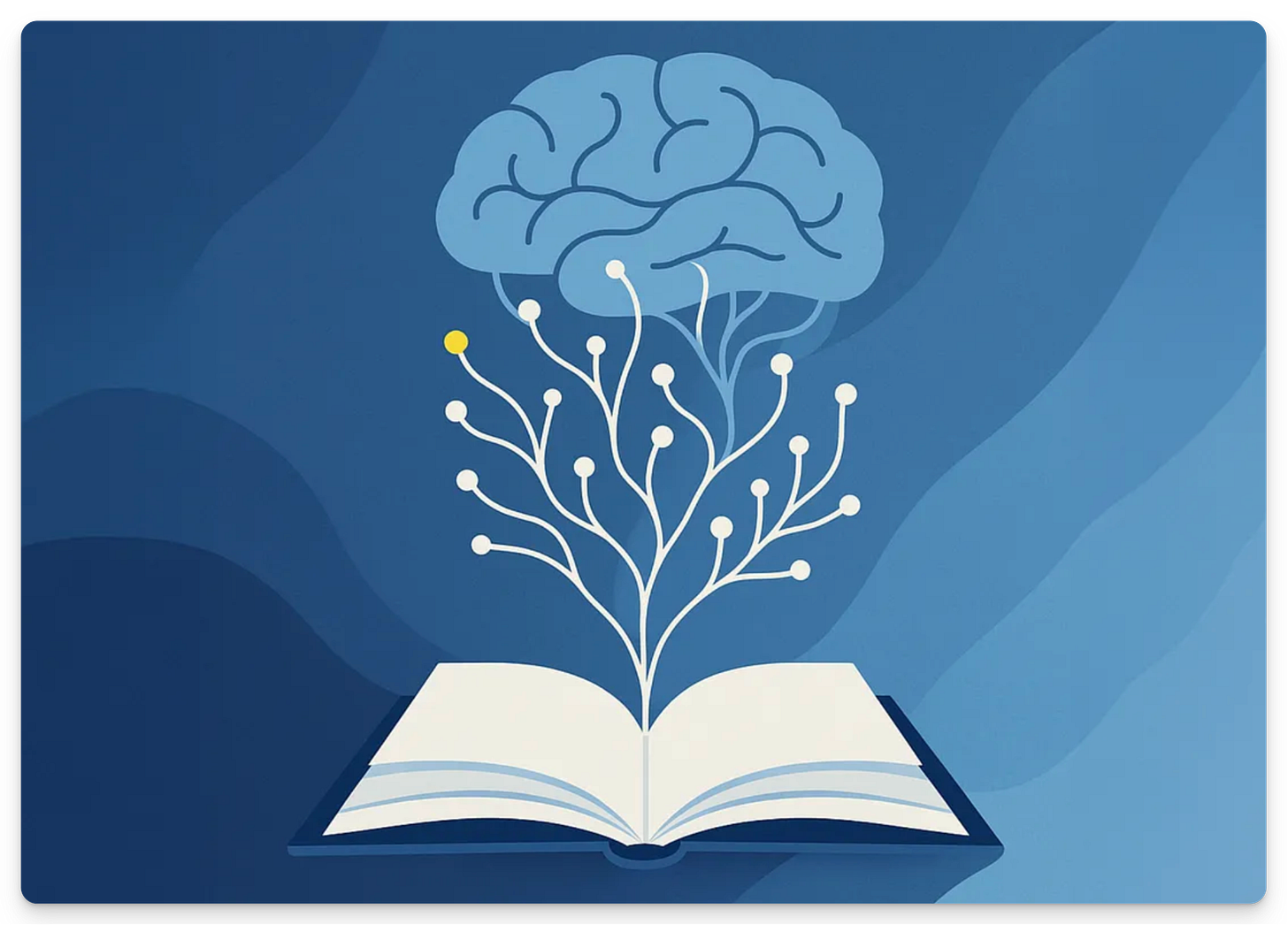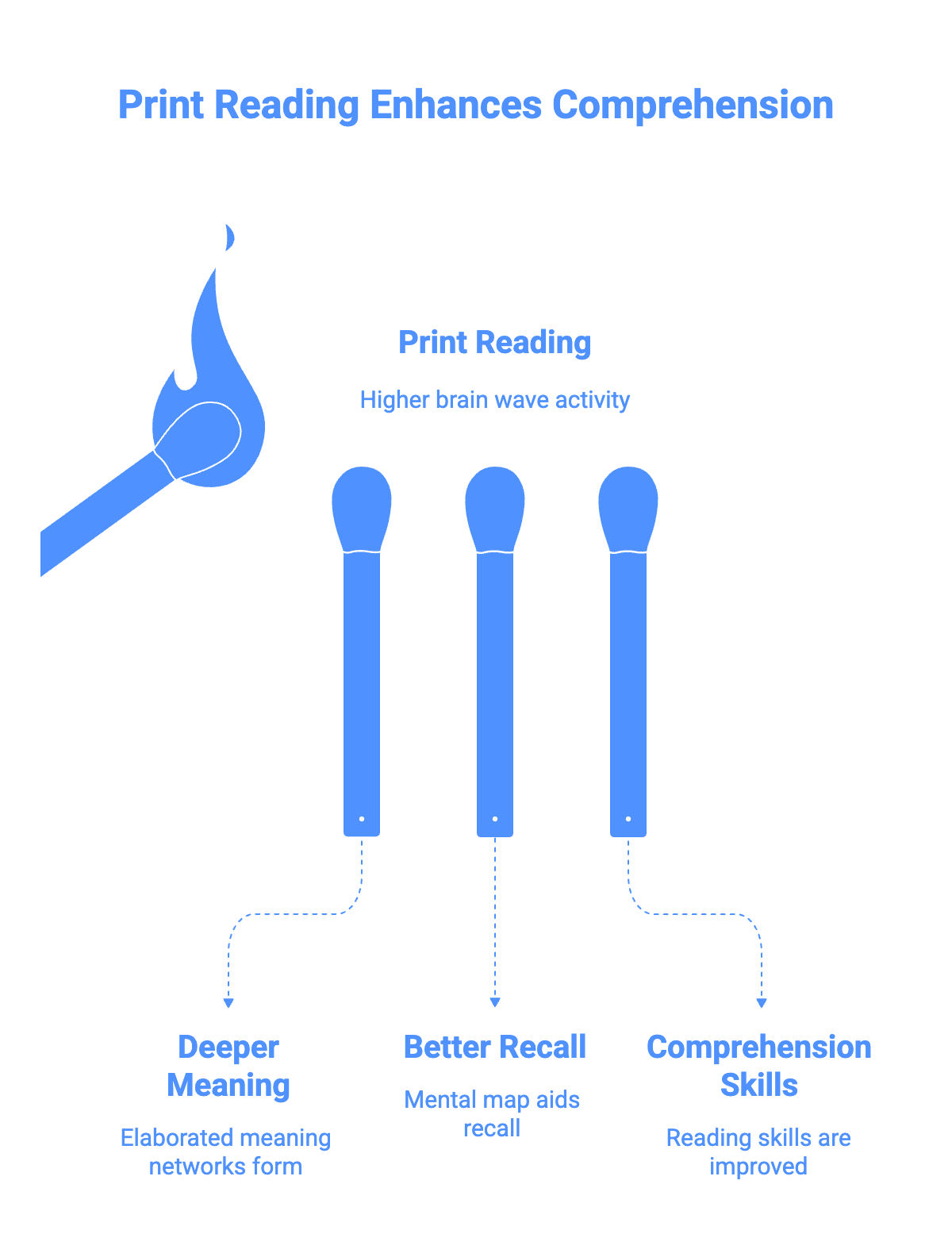6 Ways Reading Changes Your Brain (backed by Brain Scans)
Physical proof that books make you think and feel differently
Hi Kwik Brain,
Most people treat reading as a hobby. But modern neuroscience reveals something startling: every time you read, you trigger tangible changes in your brain’s structure and function. Not metaphorical changes. Physical ones.
This isn’t about becoming smarter or more cultured. Reading is a profound neurobiological process that commandeers and repurposes existing neural architecture originally built for other tasks. Your brain has no specialized structures for reading. It never evolved for written language. Instead, it performs an astonishing feat: hijacking circuits meant for vision and object recognition to create something entirely new.
Here are six surprising discoveries about what happens to your mind when you read a book.
1. Reading physically remodels your brain’s architecture
The changes happen fast. Shockingly fast.
Just 100 hours of reading instruction (structured reading lessons, not casual reading) can improve your brain’s white matter quality to normal levels. Detectable improvements appear within 2-3 weeks. White matter forms the neural highways carrying information between brain regions. When you read, these highways don’t just activate. They upgrade.
Eight weeks of intensive reading training produces widespread white matter plasticity across multiple tracts simultaneously. Not just in reading-specific areas. The entire cortical association system reorganizes. Your brain coordinates a network-wide upgrade.
The changes aren’t limited to children. Researchers taught illiterate women from northern India to read as adults. The results shocked them. Changes appeared not just in the outer cortex but in deep, evolutionarily old structures like the thalamus and brain stem. The adult brain proved far more flexible than anyone thought, adapting ancient systems for a modern skill.
Reading also triggers measurable increases in gray matter volume. Improvements show up in the left anterior occipito-temporal cortex, bilateral precuneus, right hippocampus, and right cerebellum. These changes remain stable even after intervention ends. Your brain literally grows thicker in regions supporting reading skills.
2. Fiction works as a high-tech simulator for your social brain
Sitting alone with a novel might be one of the best ways to improve your social skills.
Reading fiction activates brain regions involved in social behavior and understanding emotions. Your brain runs a high-fidelity social simulation, practicing social cognition in a safe environment. But here’s where it gets interesting: not all reading delivers this benefit.
High-quality literary fiction consistently improves social cognition. Lower-quality genre fiction and non-fiction do not. The association between fiction reading and empathy is significantly stronger than for non-fiction. Some research suggests frequent non-fiction readers may even have worse social abilities than infrequent ones.
The mechanism involves emotional transportation. Readers who become deeply absorbed in a story show measurable increases in real-world empathy. The effect lasts up to one week. But readers who fail to achieve this transportation may actually become less empathetic. Quality matters.
Meta-analyses involving over 11,000 participants confirm that fiction readers show enhanced empathy and superior ability to understand others’ thoughts and feelings. Fiction serves as direct practice for navigating the complexities of real human relationships.
3. Print reading builds deeper comprehension than screens
Your brain processes print and screens in profoundly different ways.
Print reading triggers greater activity in higher-frequency brain waves associated with focused attention and deep comprehension. Beta and gamma waves. Screen reading correlates with lower-frequency brain waves linked to mind-wandering and distraction. Theta and alpha waves.
This difference has real consequences. Children’s brains show richer, more elaborated meaning networks following print reading. Digital reading requires the brain to work harder building meaningful connections. The physical and spatial stability of a print book helps the brain create a mental map of the text, which aids recall and comprehension.
One study found readers of a paperback book were significantly better at remembering the order of events than those who read the same story on a Kindle. The lack of physical cues in digital format hindered mental reconstruction of the narrative’s timeline.
A meta-analysis covering two decades concluded that for elementary and middle school students, reading on screens actually lowered reading comprehension skills. This neurological difference helps explain the decline in reading for pleasure amidst the rise of screen-based childhood.
4. Reading is one of the best defenses against cognitive decline
Think of reading as brain insurance. The premiums are paid through consistent engagement. The benefit isn’t the absence of damage but the enhanced capacity to withstand it.
Reading at least once per week reduces the risk of cognitive decline by approximately 50%. The protective effects persist across all education levels. Longitudinal studies followed adults over 14 years to reach this conclusion.
Even a one-point increase in reading activity predicts a 33% lower risk of developing Alzheimer’s disease. The habit builds what neuroscientists call cognitive reserve: the brain’s resilience against age-related deterioration. When primary neural pathways begin to fail, reading provides backup routes.
Autopsies of avid readers have revealed something fascinating. Their brains showed significant Alzheimer’s pathology, yet these individuals exhibited fewer cognitive symptoms during their lives compared to less-active individuals with similar levels of physical brain damage. Reading doesn’t prevent the damage. It helps you cope with it.
The opposite is equally striking. Illiteracy is linked to a nearly three-fold greater risk of developing dementia. This protective effect appears independent of formal education, making reading a uniquely equitable tool for promoting brain health.
5. The US literacy crisis costs more than you think
When a brain isn’t rewired for literacy, the costs stagger both individual and nation.
54% of US adults have a literacy level below that of a sixth grader. This isn’t just embarrassing. Low levels of adult literacy are estimated to cost the US up to $2.2 trillion per year. That figure represents billions in lost tax revenues and social service expenditures. Half of unemployed youth cannot read well enough to be considered functionally literate.
The connection to broader societal outcomes is stark. Some US states have historically based projections for future prison bed needs on how well current elementary school students perform on reading tests. The link between early literacy and long-term societal outcomes couldn’t be clearer.
This isn’t merely a personal advantage. It’s a societal imperative.
6. Reading aloud makes you smarter, even alone
Want to boost your memory and engagement with any text? Read it out loud.
This phenomenon is called the production effect. The act of saying a word aloud makes it significantly more memorable than reading it silently. The brain creates a more distinct and durable memory when it coordinates the motor act of speaking with the self-referential act of hearing your own voice.
Richer sensory experience. Better retention. Whether you’re studying for an exam or want to better retain concepts in a non-fiction book, reading key passages aloud is an easy and effective enhancement.
What to do with this information
Start with print. People reading 30 pages nightly show increased left temporal lobe activity the following morning, correlating with improved memory consolidation, emotional regulation, and verbal recall. Begin with just 10 pages. The goal is consistency, not heroics. Small, repeated activations are more effective for strengthening neural pathways than infrequent large efforts.
Choose fiction strategically. If you want to enhance empathy and social understanding, literary fiction delivers superior results. Romance novels can be particularly effective at promoting empathy. The psychological complexity of literary characters provides advanced training for understanding real people.
Remove distractions. When you read, actually read. Put your phone in another room. This reduces the cognitive load on your working memory, allowing your brain’s limited resources to focus entirely on the text. This facilitates deeper processing and better memory encoding.
The story of the reading brain is not one of passive reception but of active, deliberate creation. You are the architect. Every sentence, paragraph, and chapter you read is part of the ongoing story of your own changing brain.
Knowing that every page physically reshapes your mind, what will you choose to read next?











Hi Jim. It's Jeremy Eve from Johannesburg, South Africa, here. I'm 66, and I am nuts about improving my brain, and have read a number of books on the subject, especially neuroplasticity. I thoroughly enjoyed the article. But two things bothered me. One, I read exclusively on my Kindle or the Kindle app on my phone. Does that mean I'll derive no benefit, cognitively speaking, from reading? I'm very conscious of dementia and Alzheimers, so I'd hate to think reading will do nothing to improve/rewire my brain. Secondly, I read non-fiction virtually exclusively. So, will I, again, be looking at zero improvement? That would be tragic. Regards, Jeremy.
Hi all. I am Mr. Jackie. I primarily read nonfiction in both digital and print formats. Please use this newsletter to share your knowledge and understanding with someone who may not be like you, an avid reader. I embrace reading agility in my reading, so I read widely.
None of us is the same, and how we learn, in whatever format(s), will be just varied. So, don't stress about this newsletter, as it contains more distressing information about others, not about us. Read on, read widely, and enjoy your reading, fellow avid readers.